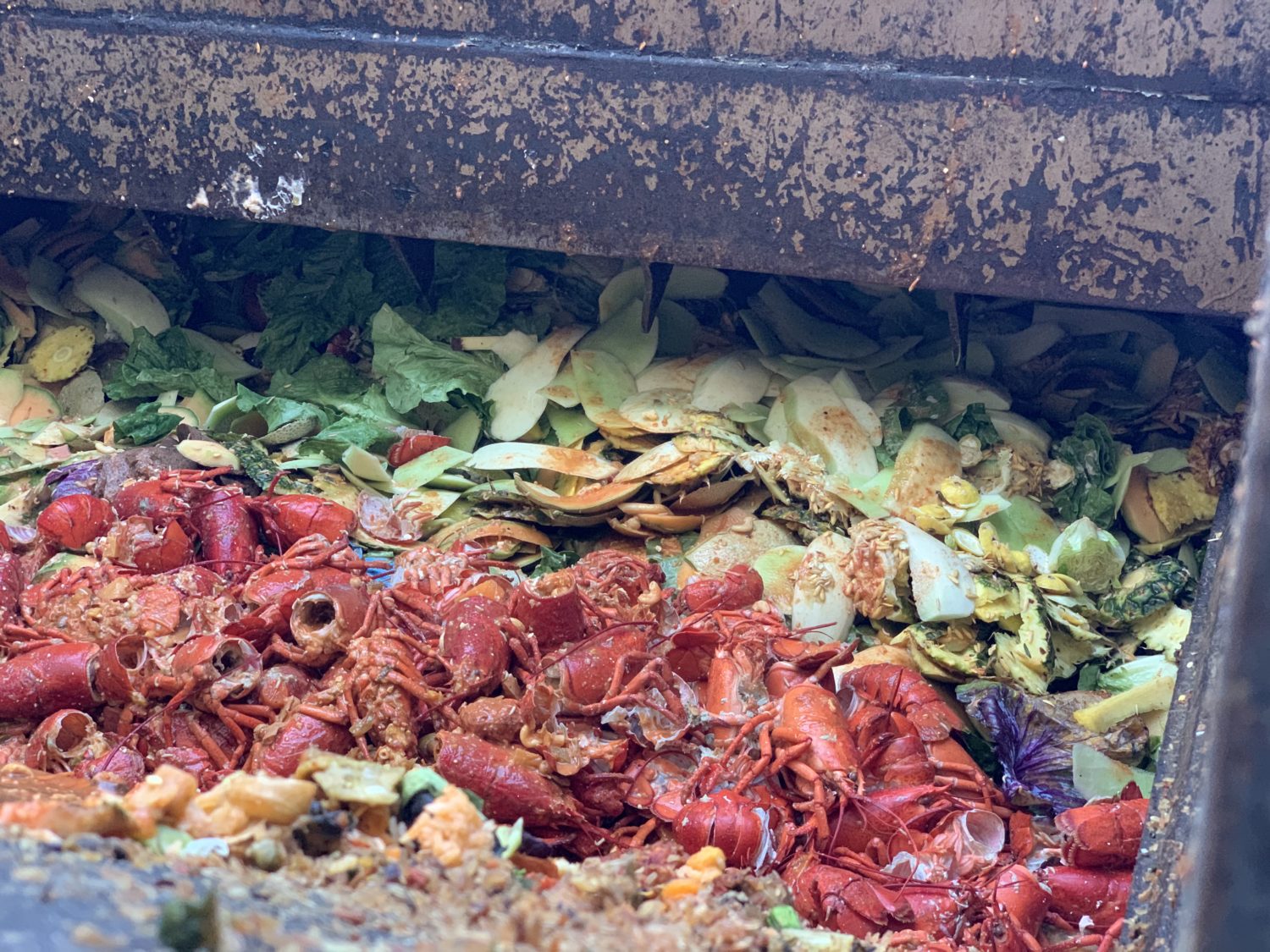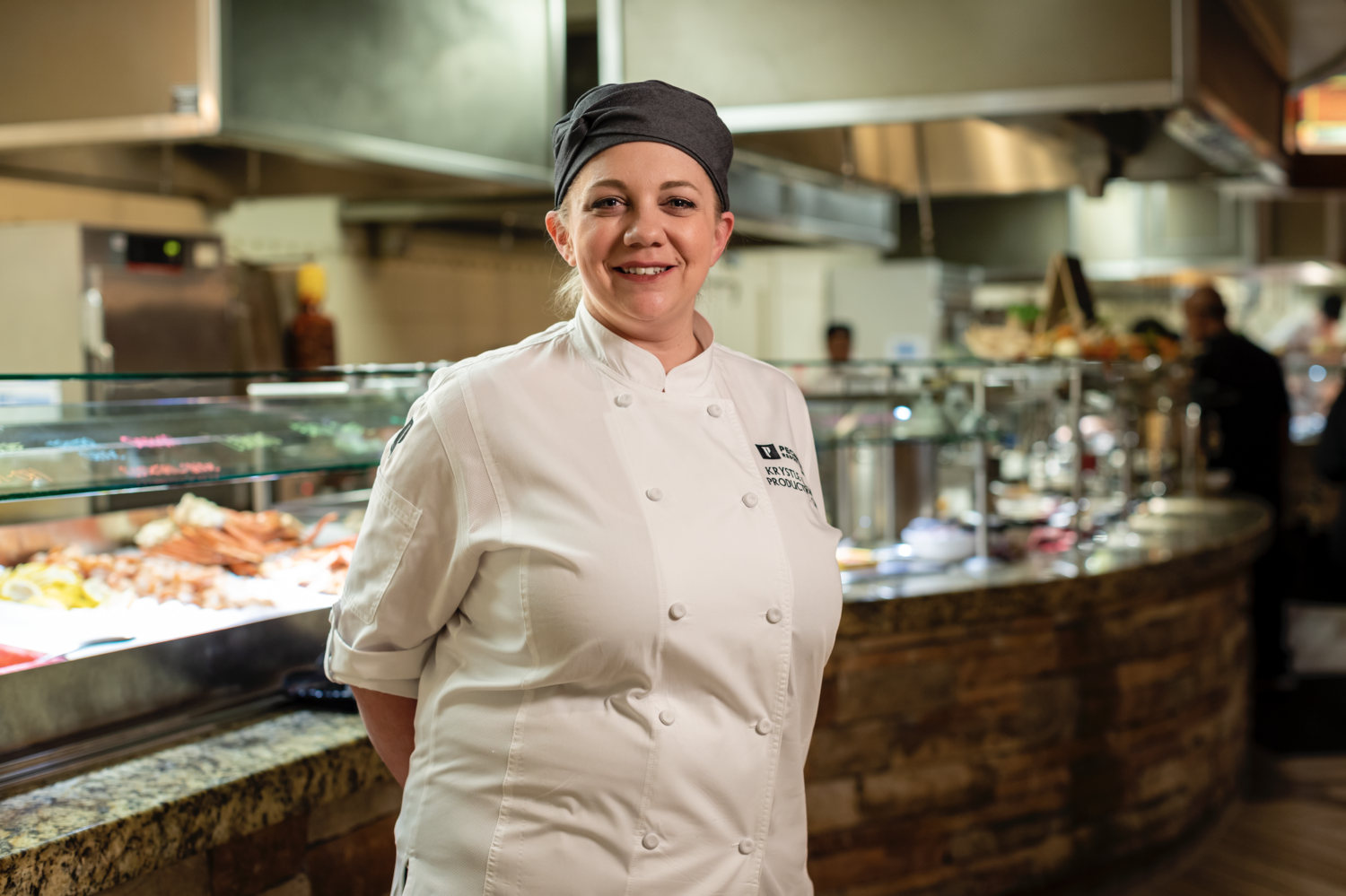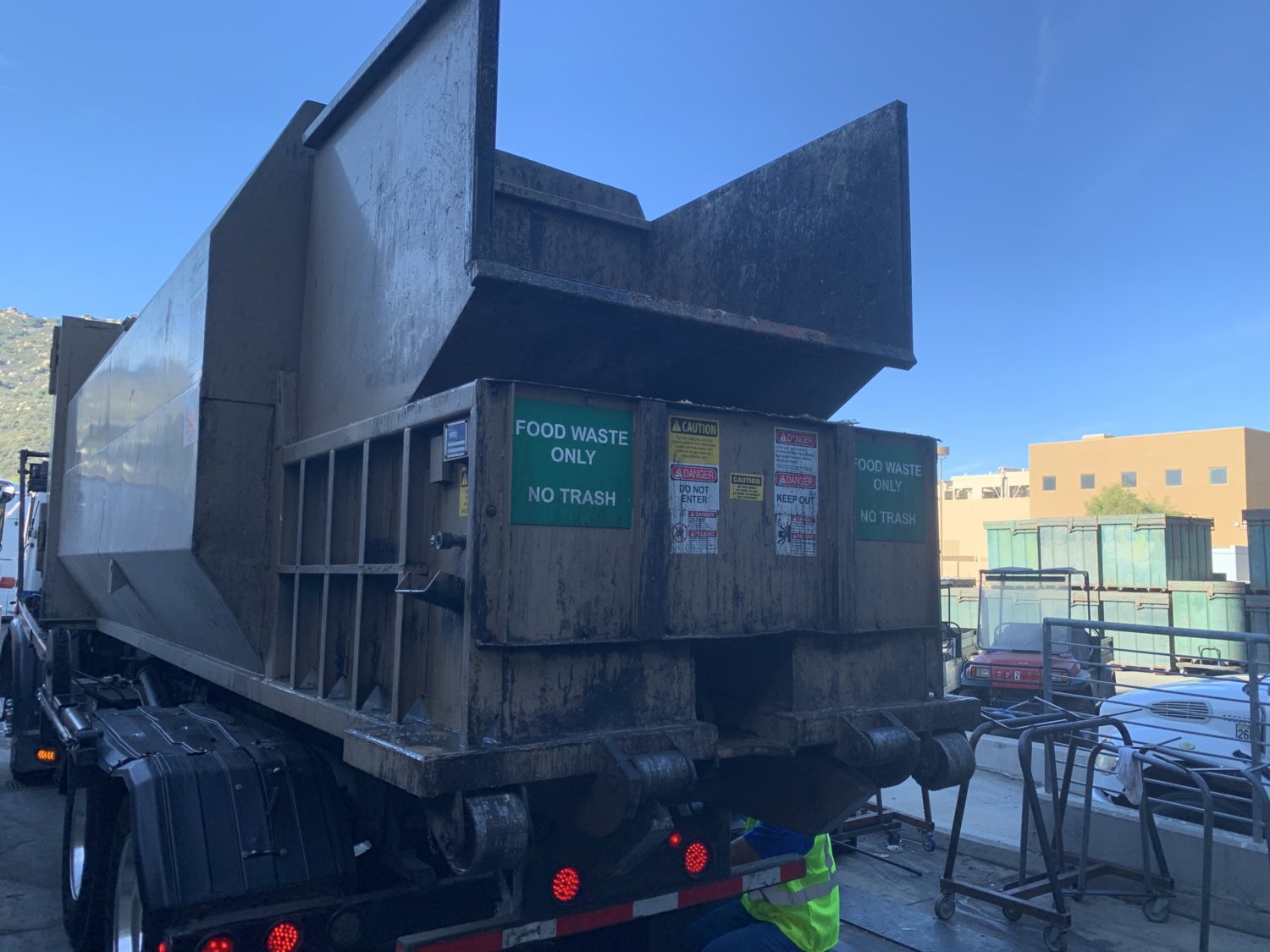Ever wonder what happens to the tons of food waste generated by the mega buffets at your favorite casino resort? The buffet at the Pechanga Resort Casino generates more than four tons a week. In just one day, they’re left with skins from more than 600 avocados, trimmings from 350 heads of lettuce, eight pounds of egg shells from 800 eggs and shells from 3,000 lobsters — and none of it ends up in the landfill.
“All the food waste goes into special bins that are stationed in each of our prep kitchens at Pechanga,” Ciara Green, media and public relations director tells L.A. Weekly. “The bins get emptied regularly into a food waste compactor. Then once a week, the collection truck from CR&R Waste and Recycling Services comes by and hauls the contents away.”

Food waste to be recycled at Pechanga (Pechanga Resort Casino)
The waste goes to a nearby anaerobic digestion facility in Perris. The food goes into the digester, spins around via giant turbines, and gets separated into biogas and biosolids. They use the biogas to fuel their refuse trucks, while the biosolids are dried and then sold as rich, dense fertilizer for gardeners and farmers available at select Southern California Home Depots and other outlets. Some of the compost also makes its way to the Pechanga vegetable and herb gardens on the reservation.
Green says that nearly 100,000 pounds of meat bones and meat fat trimmings and about 40,000 gallons of used cooking oil are recycled each year. The materials are turned over to another recycler that turns them over to make biofuel and animal feed .
When food waste goes to the landfill, it breaks down and emits methane. For every ton of methane eliminated, it’s equal to capturing 30 tons of carbon emissions and only costs the resort $35 more per pickup to recycle food waste items than it is to send them directly to the landfill.

Chef Krystle Schenk (Pechanga Resort Casino)
“We’ve been active in food recycling for the last 10 years and there are a lot of ways to keep the waste down at home,” buffet chef Krystle Schenk tells L.A. Weekly.
So what lessons are there for families cooking Thanksgiving spreads this week?
“A good way to tackle it right from the beginning is source reduction and monitoring how much you’re buying,” says Schenk. “When you go to the store ask yourself if you really need 10 bananas or if you can get away with six. It’s better to purchase less right from the beginning. We need to be a little more responsible with our purchases. Bring your own produce bags. If you’re getting a great deal on broccoli or meat, freeze it in your reusable storage containers. You can prolong its life without letting it go to waste. If you’re buying one big package instead of four small packages, you’re reducing the plastic that’s going into the landfills. Wash and reuse your freezer bags.”
Storing produce properly will help preserve shelf life. Schenk says there are certain things you don’t want to store together.
“Different foods emit different gasses and will go bad faster if you store them together,” she warns. “Onions and apples are notorious for that. You don’t want to store other produce with these two because they emit natural biogases that aid in ripening. Storing them separate will prolong their and the life of other produce as well.”
Other tips from chef Schenk include:
When buying fresh herbs, keep the stems moist in a wet paper towel. Use soft herb stems, don’t throw them out. Use tougher stems for your stock. Even if it’s brown, the flavor is still in the stem and works in your broth. Save the greens from carrots, beets, fennel and other root vegetables for the stock pot and don’t throw out those Swiss chard ribs! Saute them with the leaves. Use the beet greens in soups and salads.
Take use-buy dates with a grain of salt. Most of these products can last a week or more than that date depending on what it is, especially eggs. To check eggs for yourself, put them in water and see if they float. If it does, the air pockets have taken over and it’s past its prime. If it sinks and stays on the bottom, the proteins are still dense and it’s good and safe. Use your senses before throwing food out.
And speaking of eggs save the shells to start seedlings for your garden. Plant the seeds in the hollowed-out eggs and drop them into the soil at the proper time of the season and the natural containers will decompose all on their own and you don’t need to buy any plastic pots. Or rinse them, crush them and sprinkle throughout the garden for natural snail protection and as fertilizer.
Turn potato peels and carrot shavings into the top part of the soil in your garden. Whether it’s for flowers or vegetables, it turns into compost and feeds your plants. Mix them loosely into the top layer and the sun will break it down, worms get in there and all the natural processes take place. The smaller it is, the faster it breaks down.
Throw all the turkey bones and carcass, unused leftover herbs, onion, carrot and celery remnants into a pot with water for a flavorful and freezable stock, and see how empty the black trash can can be.

Food Waste Truck at Pechanga
Advertising disclosure: We may receive compensation for some of the links in our stories. Thank you for supporting LA Weekly and our advertisers.

